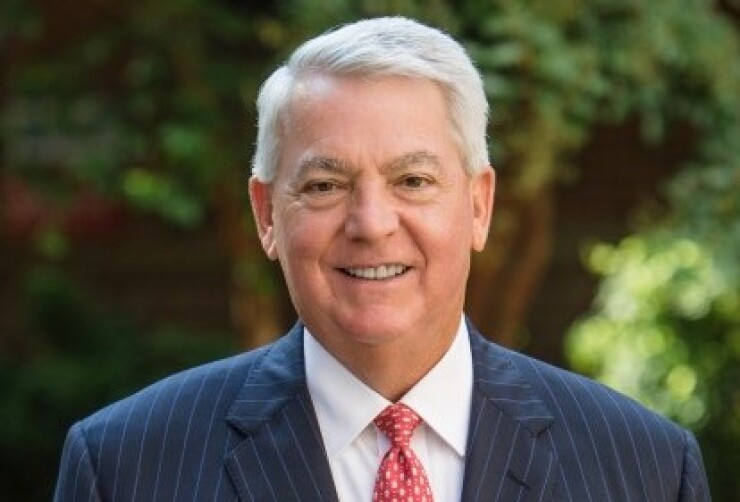Temporary changes to Synovus Financial’s staffing model could become permanent ones when the coronavirus outbreak ends.
The $51 billion-asset company has limited lobby traffic at some branches and shifted to drive-through-only service at others to slow the spread of COVID-19. About 80% of the company's 5,400 employees are working from home.
Those efforts have worked out so well that the Columbus, Ga., company is considering long-term ways to streamline its operations.
The success of remote working has “been an eye opener,” spurring discussions on how to "do business differently,” CEO Kessel Stelling said during Friday’s earnings call.

Wayne Akins, Synovus’s chief community banking officer, and his team are already looking at how the company is serving customers during the pandemic, with an eye on staffing and branch count.
“The branch system has worked very well with drive-through and appointment[s] and it certainly is allowing us to think about the number of physical locations and levels of staffing,” Stelling added.
Stelling, in response to an analyst’s question, said it is possible that Synovus could plan more drive-through-only branches.
Synovus joins a growing list of banks that are evaluating their long-term branch plans in a post-pandemic world. It is likely that banks will be even more aggressive paring back their branch networks, and possibly reduce corporate office space, to encourage social distancing in the future.
Truist Financial in Charlotte, N.C., is open to having some of its employees remain at home after the pandemic passes. The company, formed by December’s merger of BB&T and SunTrust, said about
The $506 billion-asset company has already incurred the upfront costs of providing laptops to those employees. In exchange, Truist could save money by reducing the amount of office space it occupies.
Regions Financial in Birmingham, Ala., which has been closing branches and shrinking office space, will continue to look at ways to consolidate, Chief Financial Officer David Turner said during the $135 billion-asset company’s earnings call.
“We have a whole group of people focused on our retail network strategy to make sure that we’re optimizing that network” in terms of revenue and expenses, Turner said.
Fifth Third Bancorp in Cincinnati could alter
While branch and staffing changes could help Synovus cut expenses, the company said it has postponed its broad profitability effort while dealing with fallout from the pandemic.
The initiative, Synovus Forward, was announced in March. Executives plan to generate $100 million in annual pretax income by 2022, including a goal of cutting $45 million to $65 million in operating expenses.
Net income fell 74% from a year earlier to $30 million after the company recorded a $159 million loan-loss provision that reflected adoption of the Current Expected Credit Losses standard and potential coronavirus-related losses.
While deferrals currently cover about 13% of the company’s loan portfolio, executives said they remain confident in the long-term performance of pandemic-sensitive loan categories such as senior housing.
“There may be some short-term impact related to new admissions if they were, in theory, a [senior] facility that had an outbreak,” Stelling said. “But to the best of our knowledge those facilities are in good shape. So, long-term, there will be a lot of demand there.”
Paul Davis contributed to this report.





